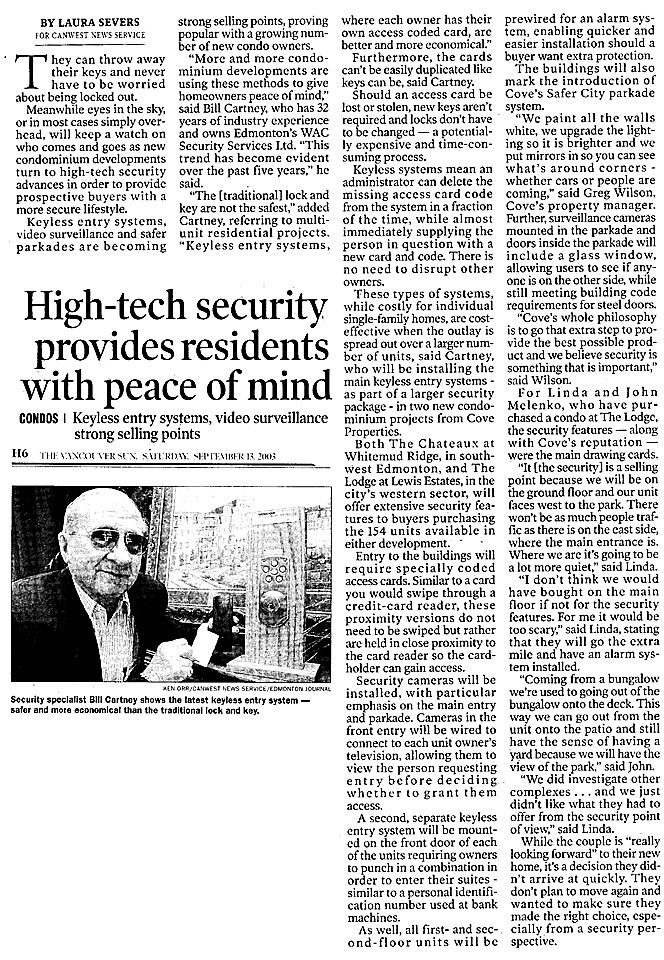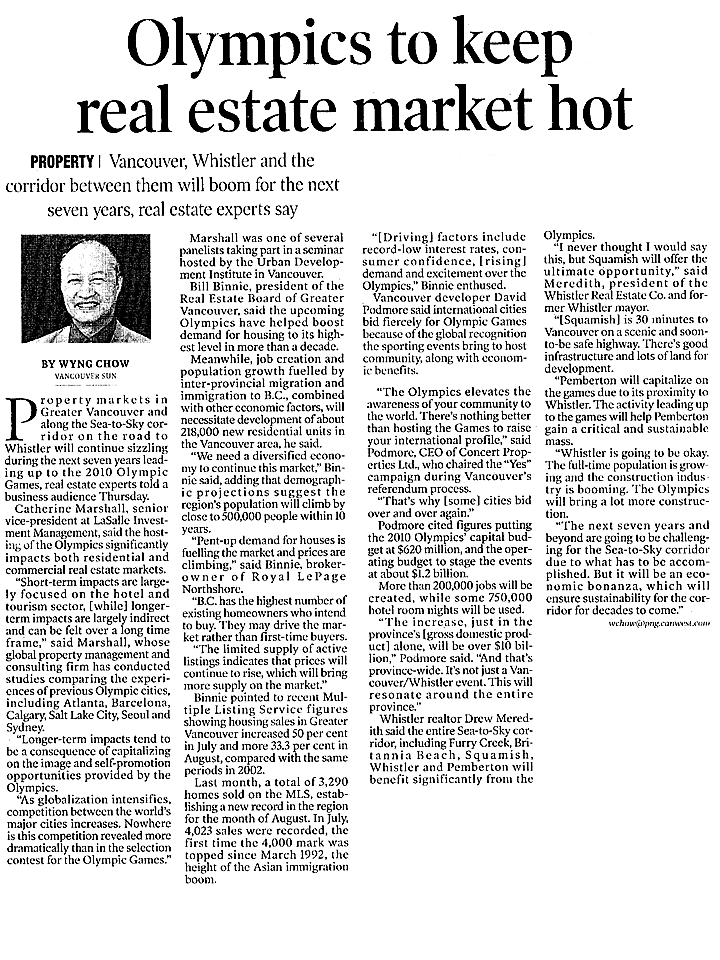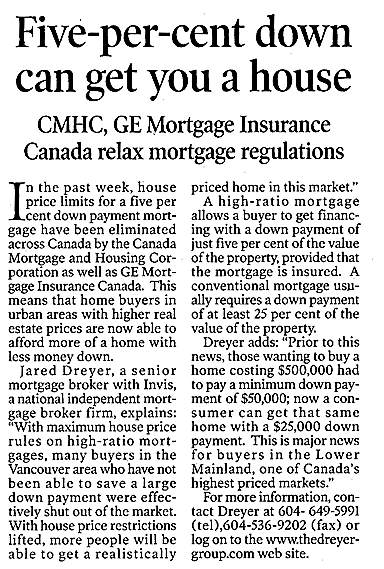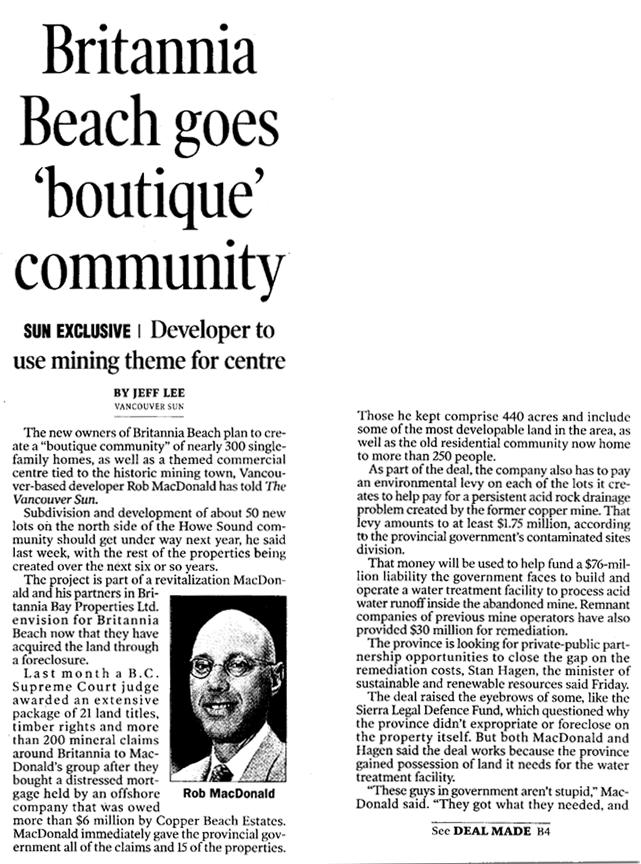The figures for August are in: Sales top $2 billion, again
Wyng Chow
Sun
Defying the traditional summer doldrums, residential property sales in B.C. totalled more than $2.2 billion in August, topping the once-elusive $2-billion mark for the sixth consecutive month.
Multiple Listing Service figures released Tuesday show 8,402 homes sold throughout the province last month — compared with 6,562 units in August 2002 — with the total dollar volume representing a 44.6-per-cent year-over-year increase.
“Consumers clearly believe this is the time to get into the [housing] market, and low interest rates are helping them do that,” said David Herman, president of the B.C. Real Estate Association.
In Greater Vancouver, housing sales hit $1.147 billion in August, up 48 per cent from $772 million the previous year as a total of 3,413 units changed hands, up from 2,558 units, a 33-per-cent improvement.
Provincial hot spots last month included Powell River, where sales volume jumped 82 per cent to $6.9 million, up from $3.8 million; along with Chilliwack, which recorded $38.7 million worth of sales, up 56 per cent from $24.8 million.
In the six Fraser Valley communities, August home sales climbed 53 per cent to $415 million, up from $271 million.
On Vancouver Island, excluding Victoria, August MLS sales totalled $141.3 million, up 45.5 per cent from $97.1 million the previous year.
“[Province-wide] monthly sales rarely reach the $2-billion mark,” noted Herman, whose association represents 12 real estate boards and more than 12,000 realtors around B.C.
“In fact, before this year, it had only happened four times: twice in 1994 and twice in 2002. Sales have surpassed $2 billion every month [in 2003] since March, even during the summer when the market is usually slower.”
The BCREA said although economic conditions varied around the province, 11 of the 12 member real estate boards reported year-over-year improvements in both dollar volume and unit sales last month over August 2002.
The lone exception was the Kootenay area, where sales slipped 0.3 per cent to $31.54 million from $31.64 million.
Real estate experts cite a combination of record-low mortgage rates, rising consumer confidence, anticipated job growth and excitement over the 2010 Olympics for the unprecedented demand for housing.
In Chilliwack, veteran realtor Jim Adam said his market is being fuelled by a growing number of people moving out from Vancouver, Surrey and Langley because of superior housing value for the dollar.
“For the price of a one-bedroom condo in downtown Vancouver, you can buy a three-bedroom, 1,900-square-foot house on a 46-by-95-foot lot for $225,000 in Chilliwack,” said Adam, of Sutton ShowPlace.
“Everybody should be moving to Chilliwack — we’ll throw in the extra bedrooms.”
Powell River Re/Max realtor David Harper said his community is attracting retirees from Vancouver, Alberta and parts of the U.S.
“It’s been one of better markets in many years,” Harper said of this summer’s boom. “People like the safety of the Powell River area, along with the climate, good fishing and low-key lifestyle.
“Our prices are still cheap compared to the rest of B.C. You can buy a two-bedroom bungalow for $40,000, or a waterfront home from $300,000 to $500,000.”
Meanwhile, in White Rock, where the average price for a detached home in August was $466,600, realtor Roslyn Millard said all housing types are in demand.
“Everything is selling, from $120,000 condos to homes priced over $1 million,” said Millard, proprietress of her independent company, Roslyn & Associates Realty.
“Most of the lower-end stuff is sold out. It’s been a great year, one of the best markets White Rock has enjoyed in quite some time.”
© Copyright 2003 Vancouver Sun







